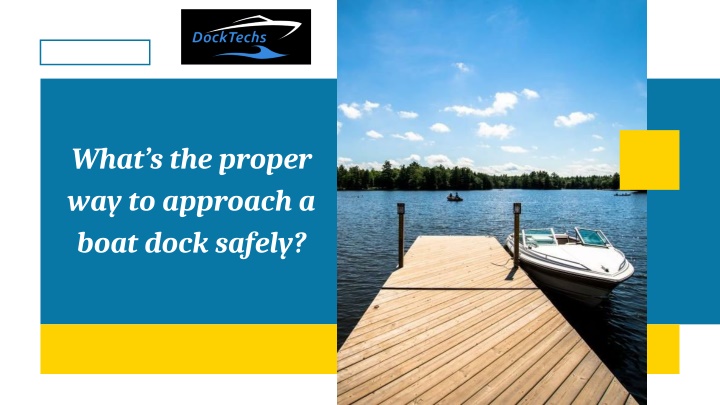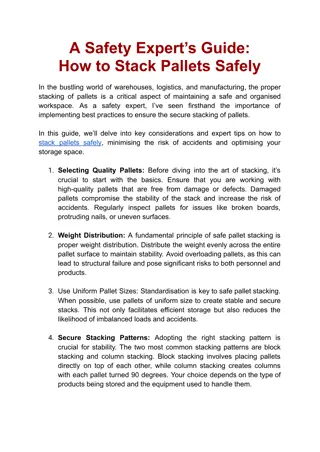What’s the proper way to approach a boat dock safely
Approaching a boat dock safely requires slow speed, controlled steering, and awareness of wind and current. Always approach into the wind or current for better control. Use fenders to prevent hull damage and have dock lines ready. Shift to neutral as
Download Presentation

Please find below an Image/Link to download the presentation.
The content on the website is provided AS IS for your information and personal use only. It may not be sold, licensed, or shared on other websites without obtaining consent from the author.If you encounter any issues during the download, it is possible that the publisher has removed the file from their server.
You are allowed to download the files provided on this website for personal or commercial use, subject to the condition that they are used lawfully. All files are the property of their respective owners.
The content on the website is provided AS IS for your information and personal use only. It may not be sold, licensed, or shared on other websites without obtaining consent from the author.
E N D
Presentation Transcript
Whats the proper way to approach a boat dock safely?
Approaching a boat dock requires careful speed control, situational awareness, and a good understanding of wind and current.
Safety during docking is essential to protect passengers, prevent damage to the vessel, and avoid collisions with other boats.
Mastering proper docking techniques builds confidence and ensures smoother, more efficient handling in various weather conditions.
How to Approach a Boat Dock Safely Step-by-Step Guidelines for Smooth and Secure Docking
1. Reduce Speed and Approach at a Controlled Angle
Always slow down well before the dock to maintain full control of the boat s movements.
Approach the dock at a shallow angle, around 20 degrees, to allow easier adjustments and safer alignment.
2. Consider Wind and Current Conditions
Adjust your approach based on wind direction and current strength to avoid drifting or overshooting the dock.
Use natural forces to your advantage by approaching against the wind or current for better control.
3. Prepare Docking Equipment in Advance
Have fenders and dock lines ready before the approach to avoid last-minute scrambling and ensure readiness.
Assign crew roles early, so each person knows when and where to assist during docking.
4. Use Short Bursts of Power and Steering Adjustments
Apply short, controlled bursts of throttle to maneuver without creating excessive wake or losing direction.
Make small, precise adjustments with the wheel or tiller to align the boat smoothly with the dock.
5. Communicate Clearly with Your Crew
Maintain eye contact and use clear hand signals or verbal cues for efficient team coordination.
Ensure everyone on board knows their responsibilities to avoid confusion and ensure a safe docking process.
Consistent practice and awareness of environmental factors are key to improving docking skills and overall boat safety.
Proper communication, preparation, and control ensure a smooth docking experience and reduce the risk of accidents.
https://www.docktechs.com/ 843.260.3439























